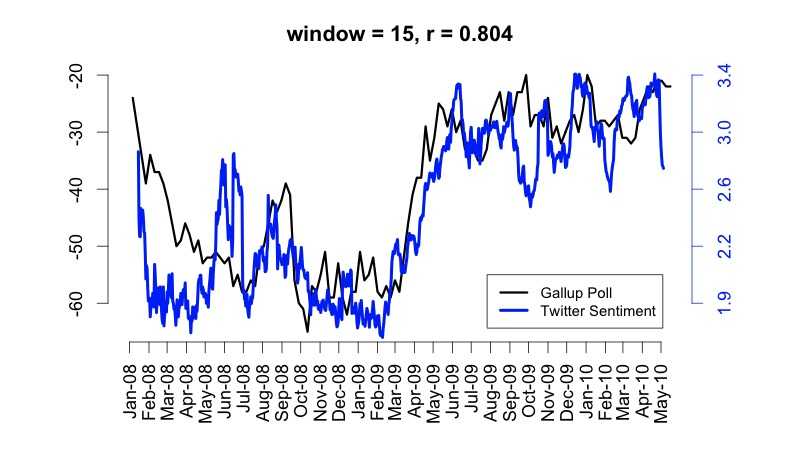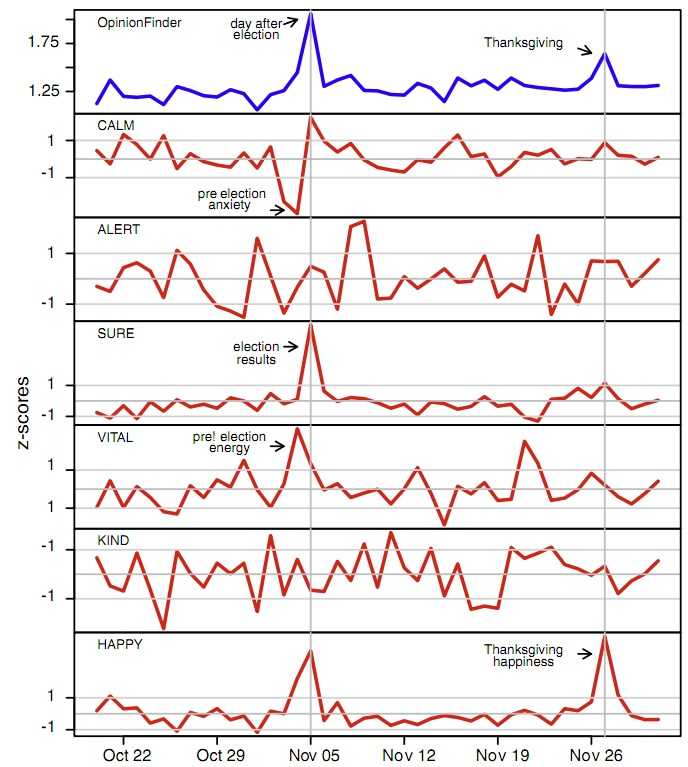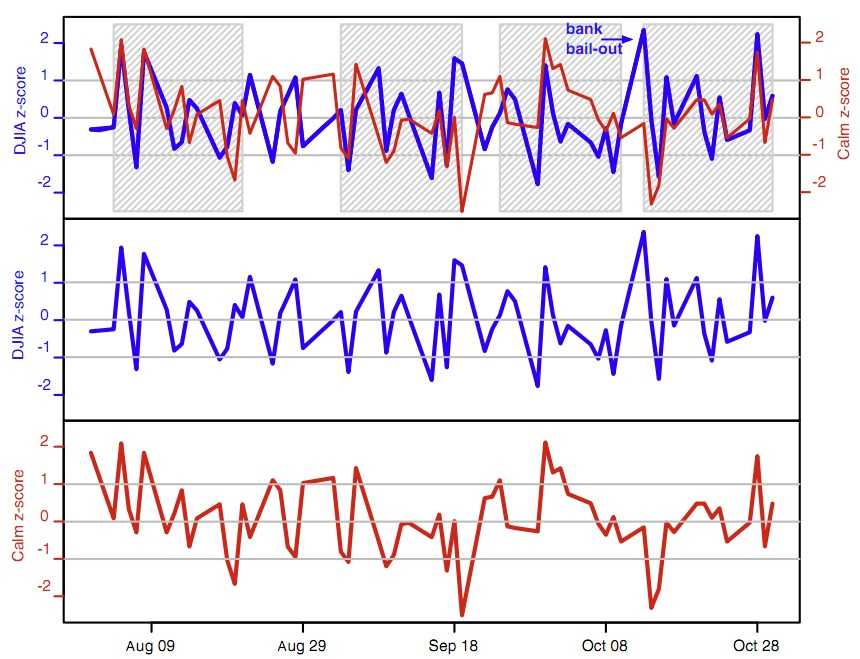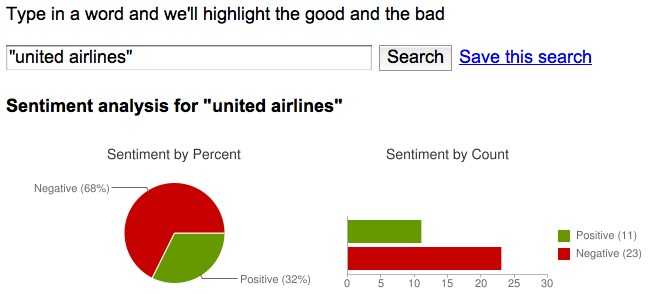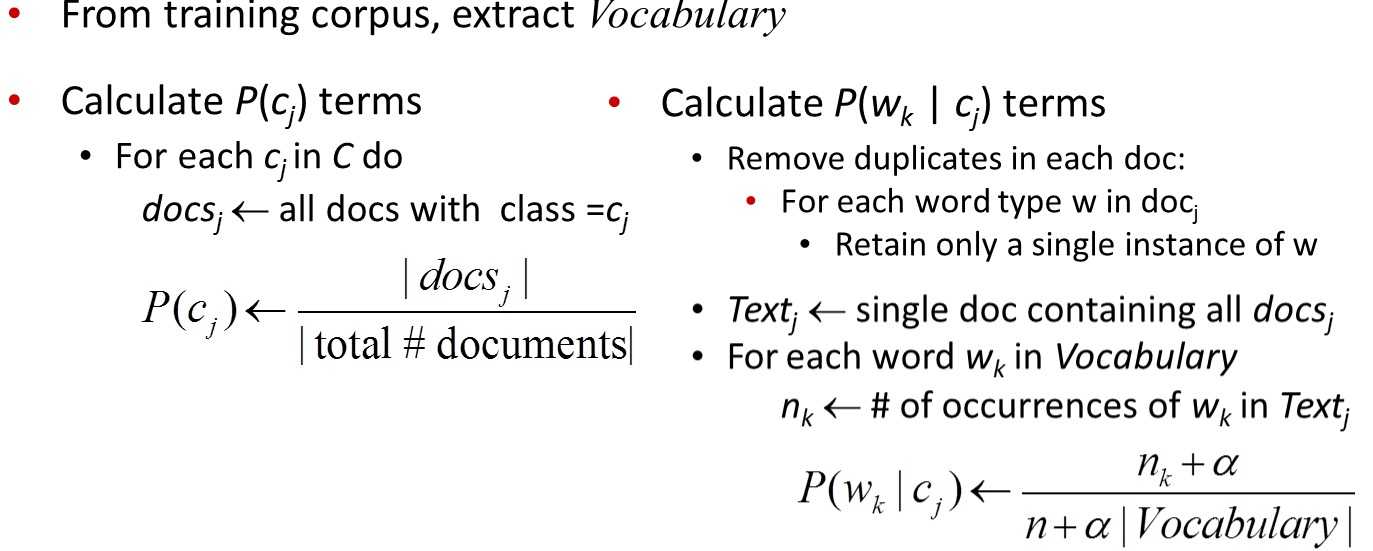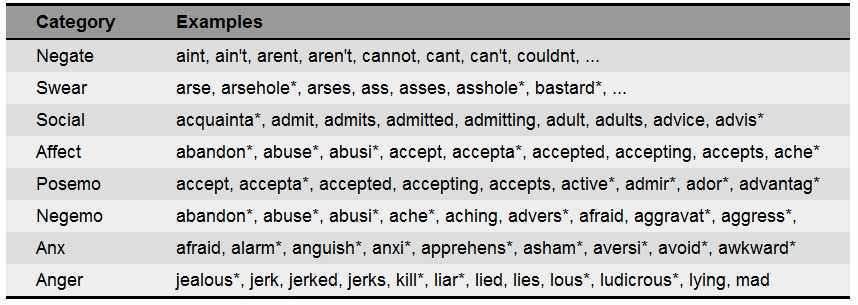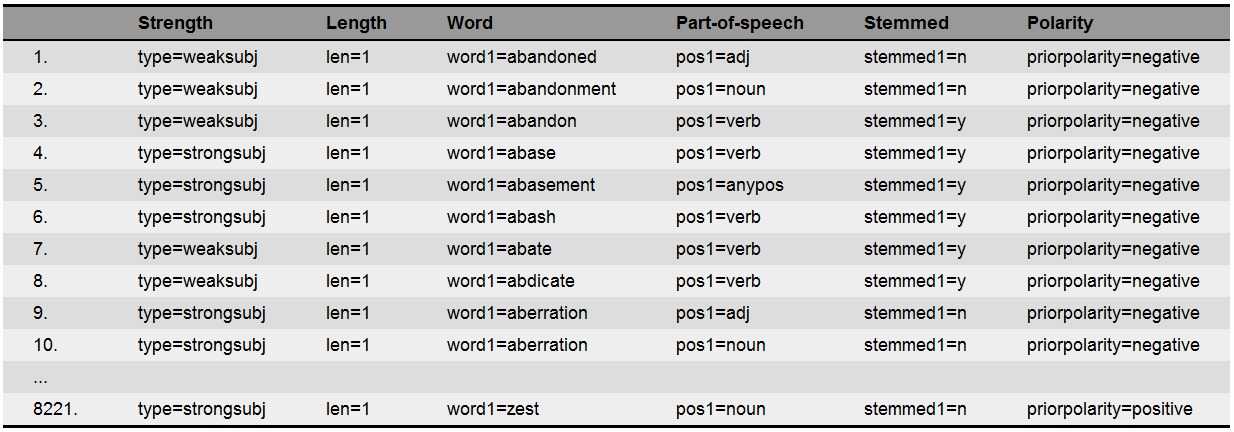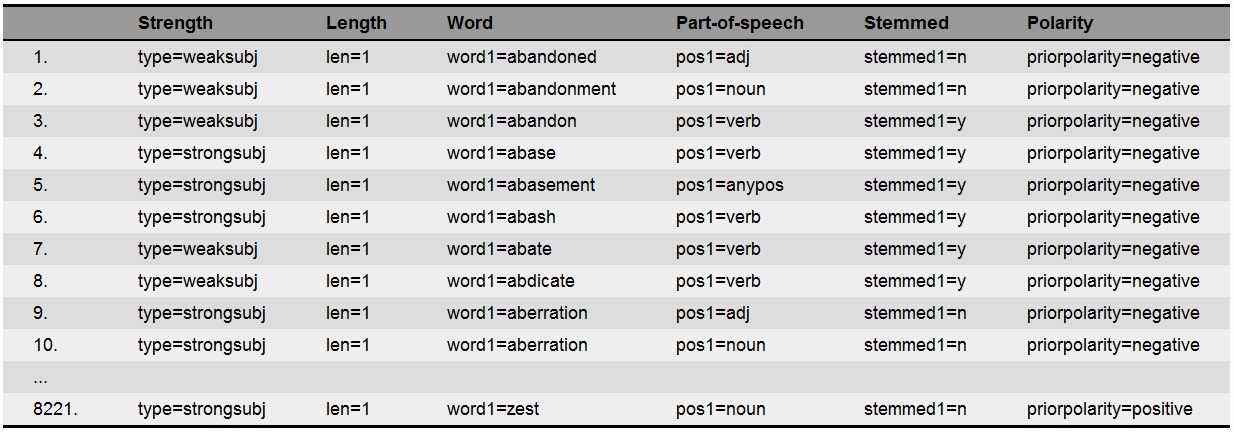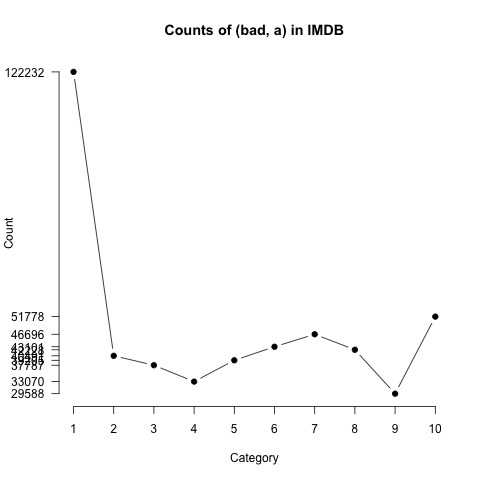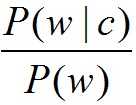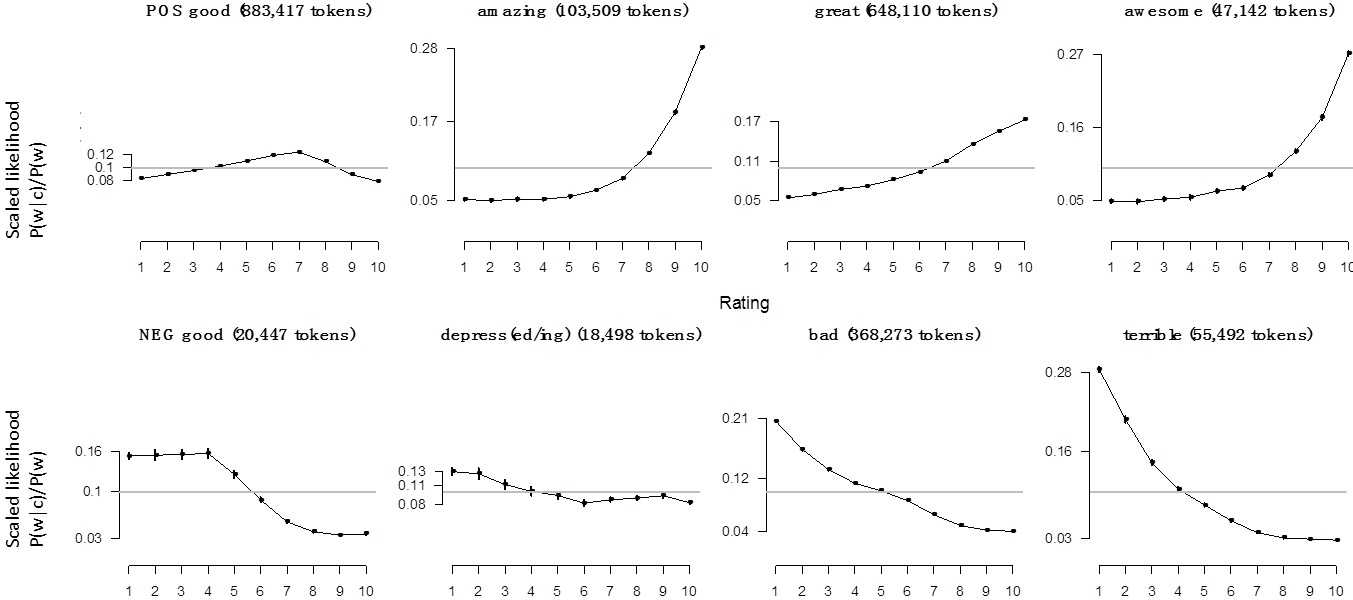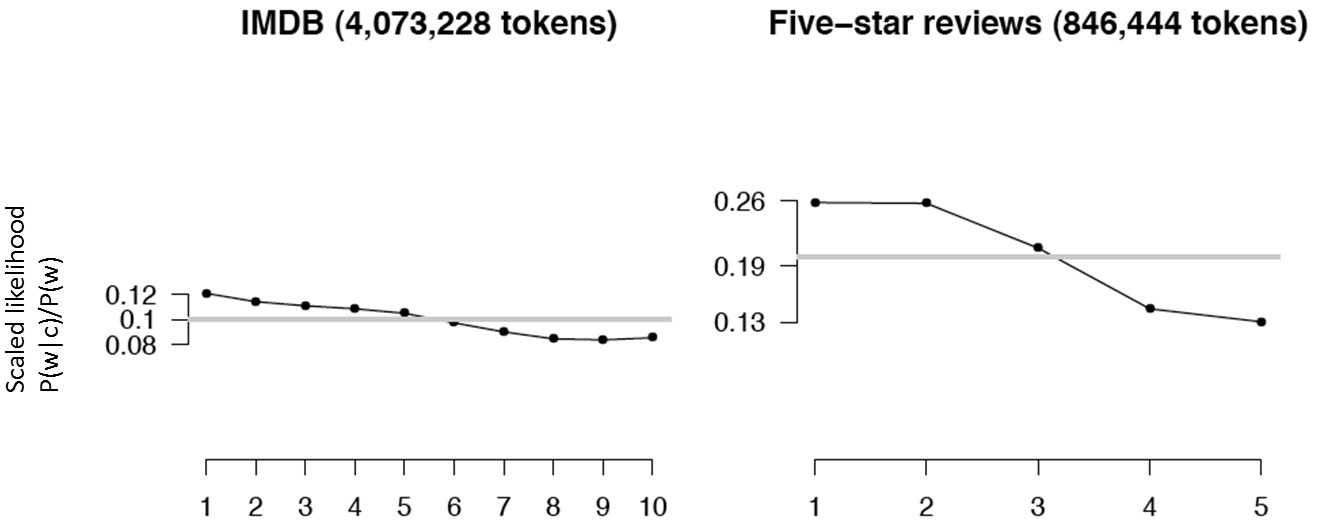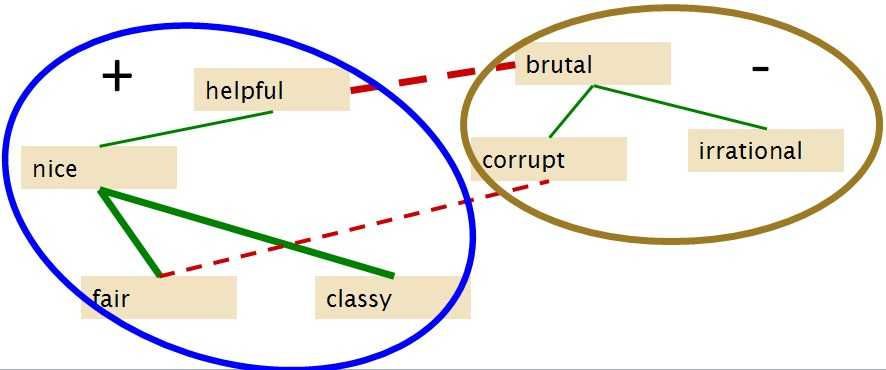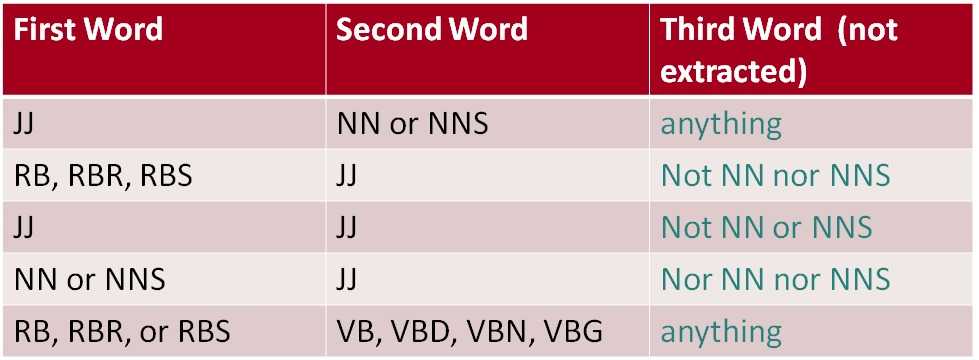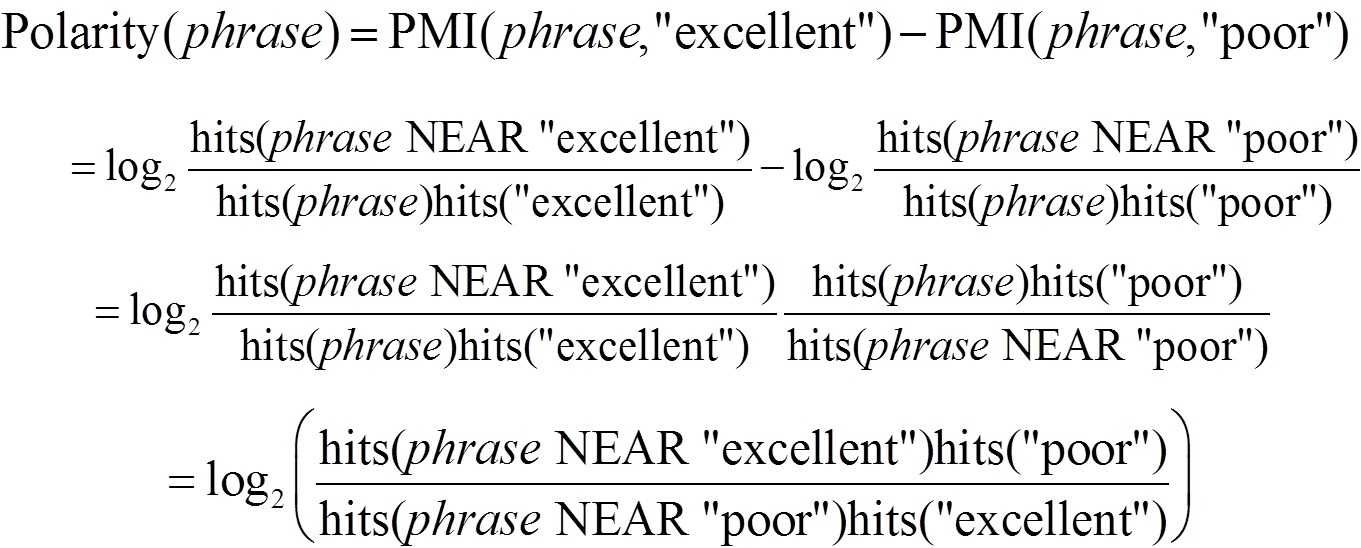一、课程介绍
斯坦福大学于2012年3月在Coursera启动了在线自然语言处理课程,由NLP领域大牛Dan Jurafsky 和 Chirs Manning教授授课:
https://class.coursera.org/nlp/
以下是本课程的学习笔记,以课程PPT/PDF为主,其他参考资料为辅,融入个人拓展、注解,抛砖引玉,欢迎大家在“我爱公开课”上一起探讨学习。
课件汇总下载地址:斯坦福大学自然语言处理公开课课件汇总
二、情感分析(Sentiment Analysis)
1)What is Sentiment Analysis?
情感分析(Sentiment analysis),又称倾向性分析,意见抽取(Opinion extraction),意见挖掘(Opinion mining),情感挖掘(Sentiment mining),主观分析(Subjectivity analysis),它是对带有情感色彩的主观性文本进行分析、处理、归纳和推理的过程,如从评论文本中分析用户对“数码相机”的“变焦、价格、大小、重量、闪光、易用性”等属性的情感倾向。
更多例子如下:
l 从电影评论中识别用户对电影的褒贬评价:
l Google Product Search识别用户对产品各种属性的评价,并从评论中选择代表性评论展示给用户:
l Bing Shopping识别用户对产品各种属性的评价:
l Twitter sentiment versus Gallup Poll of Consumer Confidence:挖掘Twitter(中文:微博)中的用户情感发现,其与传统的调查、投票等方法结果有高度的一致性(以消费者信心和政治选举为例,corelation达80%),详细见论文:Brendan O’Connor, Ramnath Balasubramanyan, Bryan R. Routledge, and Noah A. Smith. 2010. From Tweets to Polls: Linking Text Sentiment to Public Opinion Time Series. In ICWSM-2010。(注:下图中2008年到2009年初,网民情绪低谷是金融危机导致,从2009年5月份开始慢慢恢复)
l Twitter sentiment: 通过Twitter用户情感预测股票走势,2012年5月,世界首家基于社交媒体的对冲基金 Derwent Capital Markets 在屡次跳票后终于上线。它会即时关注Twitter 中的公众情绪指导投资。正如基金创始人保罗•郝汀(Paul Hawtin)表示:“长期以来,投资者已经广泛地认可金融市场由恐惧和贪婪驱使,但我们从未拥有一种技术或数据来量化人们的情感。”一直为金融市场非理性举动所困惑的投资者,终于有了一扇可以了解心灵世界的窗户——那便是 Twitter 每天浩如烟海的推文,在一份八月份的报道中显示,利用 Twitter 的对冲基金 Derwent Capital Markets 在首月的交易中已经盈利,它以1.85%的收益率,让平均数只有0.76%的其他对冲基金相形见绌。类似的工作还有预测电影票房、选举结果等,均是将公众情绪与社会事件对比,发现一致性,并用于预测,如将“冷静CLAM”情绪指数后移3天后和道琼斯工业平均指数DIJA惊人一致。详细见论文: Johan Bollen, Huina Mao, Xiaojun Zeng. 2011. Twitter mood predicts the stock market, Journal of Computational Science 2:1, 1-8.(注:DIJA,全称Dow Jones Industrial Average)
l Target Sentiment on Twitter(Twitter Sentiment App):对Twitter中包含给定query的tweets进行情感分类。对于公司了解用户对公司、产品的喜好,用于指导改善产品和服务,公司还可以据此发现竞争对手的优劣势,用户也可以根据网友甚至亲友评价决定是否购买特定产品。详细见论文:Alec Go, Richa Bhayani, Lei Huang. 2009. Twitter Sentiment Classification using Distant Supervision.
情感分析的意义何在?下面以实际应用为例进行直观的阐述:
• Movie: is this review positive or negative?
• Products: what do people think about the new iPhone?
• Public sentiment: how is consumer confidence? Is despair increasing?
• Politics: what do people think about this candidate or issue?
• Prediction: predict election outcomes or market trends from sentiment
情感分析主要目的就是识别用户对事物或人的看法、态度(attitudes:enduring, affectively colored beliefs, dispositions towards objects or persons),参与主体主要包括:
- Holder (source) of attitude:观点持有者
- Target (aspect) of attitude:评价对象
- Type of attitude:评价观点
- From a set of types:Like, love, hate, value, desire, etc.
- Or (more commonly) simple weighted polarity: positive, negative, neutral,together with strength
- Text containing the attitude:评价文本,一般是句子或整篇文档
更细更深入的还包括评价属性,情感词/极性词,评价搭配等、
通常,我们面临的情感分析任务包括如下几类:
- Simplest task: Is the attitude of this text positive or negative?
- More complex: Rank the attitude of this text from 1 to 5
- Advanced: Detect the target, source, or complex attitude types
后续章节将以Simplest task为例进行介绍。
2)A Baseline Algorithm
本小节对影评进行情感分析为例,向大家展示一个简单、实用的情感分析系统。详细见论文: Bo Pang, Lillian Lee, and Shivakumar Vaithyanathan. 2002. Thumbs up? Sentiment Classification using Machine Learning Techniques. EMNLP-2002, 79—86.
Bo Pang and Lillian Lee. 2004. A Sentimental Education: Sentiment Analysis Using Subjectivity Summarization Based on Minimum Cuts. ACL, 271-278
我们面临的任务是“Polarity detection: Is an IMDB movie review positive or negative?”,数据集为“Polrity Data 2.0: //www.cs.cornell.edu/people/pabo/movie-review-data”.作者将情感分析当作分类任务,拆分成如下子任务:
- Tokenization:正文提取,过滤时间、电话号码等,保留大写字母开头的字符串,保留表情符号,切词;
- Feature Extraction:直观上,我们会认为形容词直接决定文本的情感,而Pang和Lee的实验表明,采用所有词(unigram)作为特征,可以达到更好的情感分类效果。
其中,需要对否定句进行特别的处理,如句子”I didn’t like this movie”vs “I really like this movie”,unigram只差一个词,但是有着截然不同的含义。为了有效处理这种情况,Das and Chen (2001)提出了“Add NOT_ to every word between negation and following punctuation”,根据此规则可以将句子“didn’t like this movie , but I”转换为“didn’t NOT_like NOT_this NOT_movie, but I”。
另外,在抽取特征时,直观的感觉“Word occurrence may matter more than word frequency”,这是因为最相关的情感词在一些文本片段中仅仅出现一次,词频模型起得作用有限,甚至是负作用,则使用多重伯努利模型事件空间代替多项式事件空间,实验也的确证明了这一点。所以,论文最终选择二值特征,即词的出现与否,代替传统的频率特征。log(freq(w))也是一种值得尝试的降低频率干扰的方法。
- Classification using different classifiers:如Naïve Bayes、MaxEnt、SVM,以朴素贝叶斯分类器为例,训练过程如下:
预测过程如下:
实验表明,MaxEnt和SVM相比Naïve Bayes可以得到更好的效果。
最后,通过case review可以总结下,影评情感分类的难点是什么?
- 语言表达的含蓄微妙:“If you are reading this because it is your darling fragrance, please wear it at home exclusively, and tape the windows shut.”,“ She runs the gamut of emotions from A to B”。
- 挫败感表达方式:先描述开始的期待(不吝赞美之词),后表达最后失望感受,如“This film should be brilliant. It sounds like a great plot, the actors are first grade, and the supporting cast is good as well, and Stallone is attempting to deliver a good performance. However, it can’t hold up.”,“Well as usual Keanu Reeves is nothing special, but surprisingly, the very talented Laurence Fishbourne is not so good either, I was surprised.”。
3)Sentiment Lexicons
情感分析模型非常依赖于情感词典抽取特征或规则,以下罗列了较为流行且成熟的开放情感词典资源:
- GI(The General Inquirer):该词典给出了每个词条非常全面的信息,如词性,反义词,褒贬,等,组织结构如下:
详细见论文:Philip J. Stone, Dexter C Dunphy, Marshall S. Smith, Daniel M. Ogilvie. 1966.The General Inquirer: A Computer Approach to Content Analysis. MIT Press
- LIWC (Linguistic Inquiry and Word Count):该词典通过大量正则表达式描述不同类别的情感词规律,其类别体系与GI(The General Inquirer)基本一致,组织结构如下:
详细见论文:Pennebaker, J.W., Booth, R.J., & Francis, M.E. (2007). Linguistic Inquiry and Word Count: LIWC 2007. Austin, TX
- MPQA Subjectivity Cues Lexicon:其中包含Positive words: 2718,Negative words: 4912,组织结构如下图所示:
详细见论文:Theresa Wilson, Janyce Wiebe, and Paul Hoffmann (2005). Recognizing Contextual Polarity in Phrase-Level Sentiment Analysis. Proc. of HLT-EMNLP-2005.
Riloff and Wiebe (2003). Learning extraction patterns for subjective expressions. EMNLP-2003.
- Bing Liu Opinion Lexicon:其中包含Positive words: 2006,Negative words: 4783,需要特别说明的是,词典不但包含正常的用词,还包含了拼写错误、语法变形,俚语以及社交媒体标记等,详细见论文:Minqing Hu and Bing Liu. Mining and Summarizing Customer Reviews. ACM SIGKDD-2004.
- SentiWordNet:其通过对WordNet中的词条进行情感分类,并标注出每个词条属于positive和negative类别的权重大小,组织结构如下:
详细见论文:Stefano Baccianella, Andrea Esuli, and Fabrizio Sebastiani. 2010SENTIWORDNET 3.0: An Enhanced Lexical Resource for Sentiment Analysis and Opinion Mining. LREC-2010
以上给出了一系列可用的情感词典资源,但是,如何选择一个合适的为我所用呢?这里,通过对比同一词条在不同词典之间的分类,衡量词典资源的不一致程度,如下:
对于在不同词典中表现不一致的词条,我们至少可以做两件事情。第一,review这些词条,通过少量人工加以纠正;第二,可以得到一些存在褒贬歧义的词条。
给定一个词,如何确定其以多大概率出现在某种情感类别文本中呢?以IMDB下不同打分下影评为例,最简单的方法就是计算每个分数(星的个数)对应的文本中词条出现的频率,如下图所示为Count(“bad”)分布情况:
使用更多的是likelihood公式:
为了使得不同词条在不同类别下的概率可比,通常使用Scaled likelihood公式代替,如下:
如下图所示,列出了部分词条在不同类别下的Scaled likelihood,据此可以判断每个词条的倾向性。
另外,我们通常会有这么一个疑问:否定词(如not, n’t, no, never)是否更容易出现在negative情感文本中?Potts, Christopher(2011)等通过实验给出了答案:More negation in negative sentiment,如下图所示:
4)Learning Sentiment Lexicons
我们在庆幸和赞扬众多公开情感词典为我所用的同时,我们不免还想了解构建情感词典的方法,正所谓知其然知其所以然。一方面在面临新的情感分析问题,解决新的情感分析任务时,难免会需要结合实际需求构建或完善情感词典,另一方面,可以将成熟的词典构建方法应用于其他领域,知识无边界,许多方法都是相通的。
常见的情感词典构建方法是基于半指导的bootstrapping学习方法,主要包括两步:
- Use a small amount of information(Seed)
- A few labeled examples
- A few hand-built patterns
- To bootstrap a lexicon
接下来,通过相关的几篇论文,详细阐述下构建情感词典的方法。具体如下:
1. Hatzivassiloglou & McKeown:论文见Vasileios Hatzivassiloglou and Kathleen R. McKeown. 1997. Predicting the Semantic Orientation of Adjectives. ACL, 174–181,基于这样的一种语言现象:“Adjectives conjoined by ‘and’’ have same polarity;Adjectives conjoined by ‘but ‘ do not”,如下示例:
- Fair and legitimate, corrupt and brutal
- *fair and brutal, *corrupt and legitimate
- fair but brutal
Hatzivassiloglou & McKeown(1997)提出了基于bootstrapping的学习方法,主要包括四步:
- Step 1:Label seed set of 1336 adjectives (all >20 in 21 million word WSJ corpus)
初始种子集包括657个 positive words(如adequate central clever famous intelligent remarkable reputed sensitive slender thriving…)和679个 negative words(如contagious drunken ignorant lanky listless primitive strident troublesome unresolved unsuspecting…)
- Step 2:Expand seed set to conjoined adjectives,如下图所示:
- Step 3:Supervised classifier assigns “polarity similarity” to each word pair, resulting in graph,如下图所示:
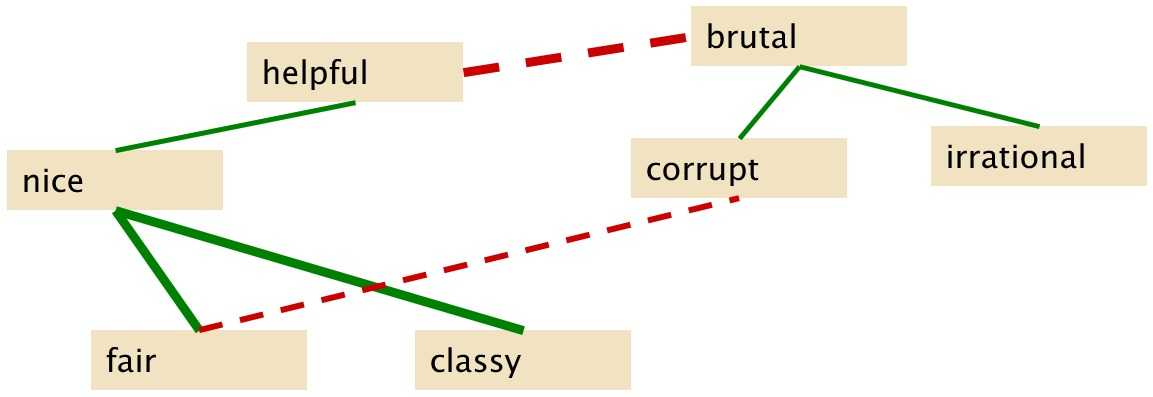
- Step 4:Clustering for partitioning the graph into two
最终,输出新的情感词典,如下(加粗词条为自动挖掘出的词条):
- Positive: bold decisive disturbing generous good honest important large mature patient peaceful positive proud sound stimulating straightforwardstrange talented vigorous witty…
- Negative: ambiguous cautious cynical evasive harmful hypocritical inefficient insecure irrational irresponsible minor outspoken pleasant reckless risky selfish tedious unsupported vulnerable wasteful…
2. Turney Algorithm:论文见Turney (2002): Thumbs Up or Thumbs Down? Semantic Orientation Applied to Unsupervised Classification of Reviews,具体步骤如下:
- Step 1:Extract a phrasal lexicon from reviews,通过规则抽取的phrasal如下图所示:
- Step 2:Learn polarity of each phrase,那么,如何评价phrase的polarity呢?直观上,有这样的结论:“Positive phrases co-occur more with ‘excellent’,Negative phrases co-occur more with ’poor’”,这时,将问题转换成如何衡量词条之间的共现关系?于是,学者们引入了点互信息(Pointwise mutual information,PMI),它经常被用于度量两个具体事件的相关程度,公式为:
两个词条的PMI公式为:
 常用的计算PMI(word1, word2)方法是分别以”word1”,”word2”和”word1 NEAR word2”为query,根据搜索引擎检索结果,得到P(word)和P(word1, word2),如下:
常用的计算PMI(word1, word2)方法是分别以”word1”,”word2”和”word1 NEAR word2”为query,根据搜索引擎检索结果,得到P(word)和P(word1, word2),如下:
P(word) = hits(word)/N
P(word1,word2) = hits(word1 NEAR word2)/N2
则有:
那么,计算一个phrase的polarity公式为(excellent和poor也可以使用其它已知极性词代替):
Turney Algorithm在410 reviews(from Epinions)的数据集上,其中170 (41%) negative,240 (59%) positive,取得了74%的准确率(baseline为59%,均标注为positive)。
- Step 3:Rate a review by the average polarity of its phrases
3. Using WordNet to learn polarity:论文见S.M. Kim and E. Hovy. 2004.Determining the sentiment of opinions. COLING 2004,M. Hu and B. Liu. Mining and summarizing customer reviews. In Proceedings of KDD, 2004.该方法步骤如下:
- Create positive (“good”) and negative seed-words (“terrible”)
- Find Synonyms and Antonyms
Positive Set: Add synonyms of positive words (“well”) and antonyms of negative words
Negative Set: Add synonyms of negative words (“awful”) and antonyms of positive words (”evil”)
- Repeat, following chains of synonyms
- Filter
以上几个方法都有较好的领域适应性和鲁棒性,基本思想可以概括为“Use seeds and semi-supervised learning to induce lexicons”,即:
- Start with a seed set of words (‘good’, ‘poor’)
- Find other words that have similar polarity:
- Using “and” and “but”
- Using words that occur nearby in the same document
- Using WordNet synonyms and antonyms
- Use seeds and semi-supervised learning to induce lexicons
5)Other Sentiment Tasks
上面介绍了文档级或句子级情感分析,但是,实际中,一篇文档(评论)中往往会提及不同的方面/属性/对象(以下统称属性),且可能对不同的属性持有不同的倾向性,如“The food wasgreat but the service was awful”。一般通过Frequent phrases + rules的方法抽取评价属性,如下:
- Find all highly frequent phrases across reviews (“fish tacos”)
- Filter by rules like “occurs right after sentiment word”:“…great fish tacos” means fish tacos a likely aspect
通常,我们还会面临一种问题:评价属性缺失,准确的讲,评价属性不在句子中。这是很常见的现象,此时就需要结合上下文环境,如来自某电影的评论缺失的评价属性基本上就是电影名或演员,可以基于已知评价属性的句子训练分类器,然后对评价属性缺失的句子进行属性预测。
Blair-Goldensohn et al.提出了一套通用的aspect-based summarization models,如下图所示:
详细见论文:S. Blair-Goldensohn, K. Hannan, R. McDonald, T. Neylon, G. Reis, and J. Reynar. 2008. Building a Sentiment Summarizer for Local Service Reviews. WWW Workshop
另外,其他的一些情感分析的相关任务有:
- Emotion: 个人情绪
- Detecting annoyed callers to dialogue system
- Detecting confused/frustrated versus confident students
- Mood: 个人情绪
- Finding traumatized or depressed writers
- Interpersonal stances: 人际关系中的谈话方式
- Detection of flirtation or friendliness in conversations
- Personality traits: 性格
- Detection of extroverts
三、参考资料
- Lecture Slides:Sentiment Analysis
- Sentiment tutorial
- 赵妍研,文本情感分析综述v
ia:52opencourse
更多阅读:




